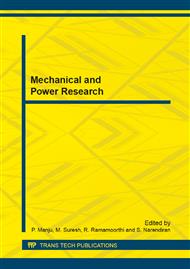p.3
p.14
p.21
p.30
p.39
p.48
p.53
p.62
A Drop Test for Finding the most Probable Resting Orientation of a Part
Abstract:
The material handling is the art of moving, orienting, packing and storing the part. Industrial feeders are used to facilitate the operations by feeding the parts in a specific quantity and at a perfect orientation. It is a tedious task to obtain a particular part orientation, at the assembly station, in a short lead time. To overcome this problem, part feeders are used to segregate and orient parts prior to packing. The natural resting orientation of the part is the orientation in which the part rests on a horizontal hard surface, when dropped from a height. The most probable natural resting orientation of the part has to be identified which helps in the effective design of feeder and orienting devices. In this paper, an attempt was made to study the effect of initial orientation from different heights on natural resting orientation. Drop test was conducted at different heights with each initial orientation. The favorable orientation of the part (or) the most probable natural resting orientation is identified using drop test. In this work, most probable natural resting orientation of a typical asymmetric component, brake pad, is identified.
Info:
Periodical:
Pages:
3-13
Citation:
Online since:
May 2014
Authors:
Keywords:
Price:
Сopyright:
© 2014 Trans Tech Publications Ltd. All Rights Reserved
Share:
Citation:


